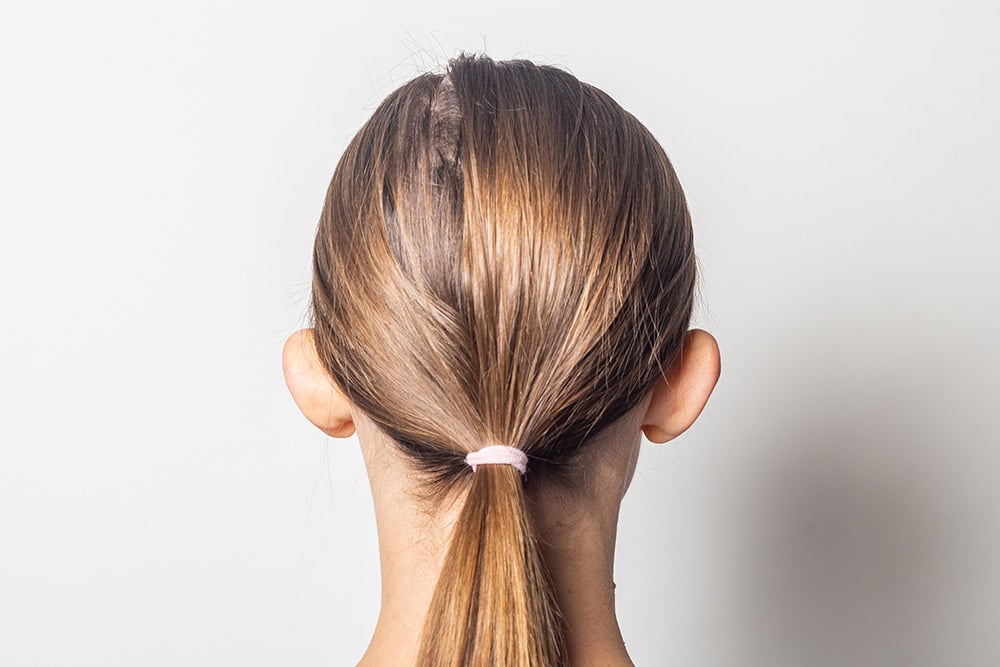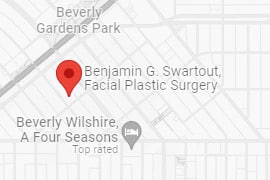
Are you familiar with the term bilateral otoplasty? Understanding medical jargon can often feel like deciphering a cryptic code. But fear not, we’re here to break it down for you. This article will give you a comprehensive understanding of bilateral otoplasty, discussing its purpose, preparation, procedure, post-surgery care, and associated benefits and risks, enabling you to make informed decisions about your health.
Understanding the Term Bilateral Otoplasty
Bilateral otoplasty (also known as “ear pinning surgery”) is a cosmetic surgery performed on both ears (bilateral) primarily for aesthetic purposes. This surgery is designed to modify the shape, position, or size of the ears, improving their overall appearance and symmetry.
Breaking Down the Terminology
‘Bilateral’ refers to a procedure performed on two corresponding parts of the body, in this case, the ears. ‘Otoplasty,’ on the other hand, is derived from the Greek words ‘otos,’ meaning ear, and ‘plasty,’ meaning molding or formation. Therefore, ‘otoplasty’ generally refers to surgery that alters the ear’s structure or shape. In simplest terms, bilateral otoplasty is a surgical procedure that modifies the ears’ structure or appearance on both sides.
The Purpose of Bilateral Otoplasty
Bilateral otoplasty is an outpatient procedure performed to modify the patient’s ear size, shape, or position to improve appearance and enhance the overall facial balance. Often, individuals opt for this surgery due to dissatisfaction with the aesthetic aspects of their ears. Others may require it for medical reasons, such as correcting congenital deformities or injuries. The primary aim is to create a natural, balanced look that blends harmoniously with the person’s overall facial features.
Cosmetic vs. Functional Reasons
Bilateral otoplasty can be pursued for a variety of reasons, that broadly fall into two categories: cosmetic and functional. Cosmetic reasons mainly revolve around improving the visual appearance of the ears. An individual might choose this plastic surgery to alter the size, shape, or position of their ears. There’s a strong link between the perception of one’s appearance and their self-esteem, making cosmetic adjustments significant.
Functional reasons for bilateral otoplasty are generally health- and hearing-related. Some people are born with structural ear defects that might impede their hearing abilities. Bilateral otoplasty can address these issues, improving the quality of life for these individuals.
The decision to undergo bilateral otoplasty is highly personal and depends on unique individual factors. Your surgeon can help outline the potential benefits of the procedure tailored to your cosmetic or functional needs.
| Cosmetic Reasons | Functional Reasons | |
|---|---|---|
| Purpose | Improve visual appearance of ears | Correct structural ear defects |
| Outcome | Enhance self-esteem | Improve the visual appearance of ears |
Preparing for Bilateral Cosmetic Ear Surgery
Before your bilateral otoplasty, ensure you follow the surgeon’s instructions to prepare. This may involve avoiding certain medications or making lifestyle changes. Keep your ears clean and in good health. Ask all necessary questions and clarify any doubts about the surgery to make the process as smooth as possible.
Exploring Pre-Surgical Evaluation and Tests
Before proceeding with a bilateral otoplasty, physicians conduct several evaluations and tests. Their primary goal is to ensure the patient’s overall health condition is suitable for surgery. This involves thoroughly examining the patient’s medical history, and current medication usage, and performing certain key tests.
Firstly, in the medical history evaluation, surgeons look out for any conditions that may increase surgical risks. These could range from serious issues such as heart conditions to seemingly non-threatening ones like allergies. Thus, it’s crucial for patients to provide complete and accurate information to help the surgeon plan the procedure more effectively.
Further, patients often undergo a comprehensive examination of the ears. This evaluates the severity of deformity, skin condition, and functionality of the ears. Additionally, surgeons assess facial harmony to develop a surgical plan that would yield aesthetically pleasing results.
Following this, diagnostic tests are often recommended. They commonly include blood tests to assess overall health. Sometimes, additional imaging tests like CT scans or MRIs may be necessary to provide a more detailed view of the ear structure.
Lastly, surgeons check for the patient’s psychological preparedness. As surgery involves some degree of anxiety and stress, it is important to ensure that the patient has realistic expectations and is mentally prepared for the post-surgical recovery period.
In conclusion, pre-surgical evaluations and tests are essential steps in preparing for a bilateral otoplasty. They not only ensure safety and suitability for the cosmetic procedure but also assist in tailoring a surgical plan according to individual needs.
The Bilateral Otoplasty Procedure Explained
The surgical treatment commences with the cosmetic plastic surgeon making an incision at the back of the ears, allowing for the reshaping, bending, or removal of ear cartilage as needed. The incision is then closed and the ears are stitched into a new position, more closely hugging the head. It’s a surgery that calls for high precision and a keen eye for symmetry, given both ears are treated simultaneously.
The incision location depends on the specific ear issue and the surgeon’s preferred approach. Whatever the case, the cosmetic goal is to ensure limited visible scarring.
Note that otoplasty is not a one-size-fits-all surgery. The surgical technique used wholly depends on the individual’s unique ear structure and the desired outcome. Remember that post-operative care is just as critical for optimal results.
Post-surgery Care for Bilateral Otoplasty
To optimize healing after bilateral otoplasty, proper care of the operated ears is necessary. Keep the ears dry and avoid sleeping on them, relieving pressure during the initial healing days. Remember to consistently take the prescribed medication and attend recommended follow-ups. In case of any unusual discomfort or complications, consult with your medical professional immediately. Proper post-surgery care aids in ensuring desired bilateral otoplasty results and prevents untoward complications.
Important Tips for Healthy Healing
During your recovery from bilateral otoplasty, it’s essential to care for your ears properly to promote healthy healing. After the surgery, clean your incisions with gentle care and prevent infections by maintaining good hygiene. It is helpful to keep your head elevated even while sleeping and, if possible, avoid any pressure on your ears for at least a few weeks, so avoid contact sports and strenuous activities to ensure a smooth recovery.
A vital part of the healing process is to avoid smoking, as this can complicate things. Additionally, it is advised to eat a balanced diet and maintain regular hydration. It’s important to remember that different people heal at different rates – follow your plastic surgeon’s advice and instructions and be patient with your body.
Be sure to protect your ears from the sun. Sun exposure may darken the scars making them more noticeable. Wear a wide-brimmed hat and avoid direct sunlight as much as possible. Also, gently massage your ears once they’ve healed a bit, as suggested by your facial plastic surgeon, to aid in reducing otoplasty swelling.
Listen to your body. If you feel tired, take a rest. Don’t rush into your normal routine – instead, return to your activities gradually.
Lastly, follow your doctor’s instructions regarding medications. Antibiotics might be prescribed to prevent infections and possibly pain medications to help with discomfort.
Here are some key tips for successful recovery:
- Clean incisions with gentle care
- Keep head elevated, avoid pressure on ears
- Avoid smoking
- Maintain a balanced diet and hydration
- Protect ears from the sun
- Lightly massage ears once healed
- Listen to your body, rest if tired
- Follow the doctor’s instructions on medication.
Benefits and Risks Associated with Bilateral Otoplasty
Like any surgical procedure, bilateral otoplasty carries potential benefits and risks. The primary advantage is the enhanced symmetry between ears, boosting self-esteem in individuals self-conscious about their appearance. Furthermore, bilateral otoplasty can also improve hearing if overly protruded ears are causing acoustic issues. However, complications such as infection, bleeding, scarring, and changes in sensation can occasionally occur. Understanding these factors thoroughly is crucial before making a decision.
Considering the Pros and Cons Before Decision-Making
Before settling on a decision regarding bilateral otoplasty, it’s important to take into consideration both the potential benefits and drawbacks of the surgery.
Examining the pros, bilateral otoplasty often results in major improvements in physical appearance and self-esteem, thanks to more balanced and proportionate ears. People who have undergone the procedure often feel more at ease in public and less self-conscious about their appearance.
On the flip side, like any surgical procedure, there are possible downsides. These include scarring, infection, a certain level of pain during recovery, and the risk that the final results may not fully meet expectations.
Moreover, there is the chance that the altered ear shape might not be satisfactory to the patient. This, in the worst-case scenario, might necessitate a second surgery.
Understanding these risks and potentials is essential in choosing to opt for the surgery. Consult with your surgeon to thoroughly discuss these points, and ensure that you are making the most informed decision about your health and appearance.
Don’t trust everything you read on the internet, and don’t hesitate to seek professional advice when confused. Reach out to double board-certified facial plastic surgeon Dr. Benjamin Swartout, a highly respected expert in the field of otoplasty. Make the smart choice: make an appointment for an initial consultation with Dr. Swartout, who will give you accurate information based on your individual needs and concerns.

